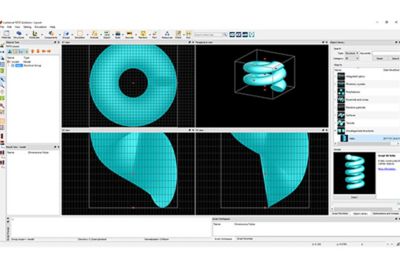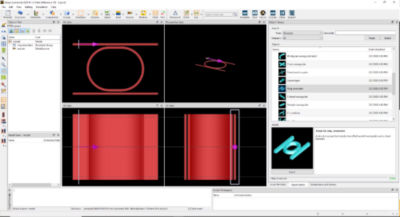Quick Specs
A range of benefits allow for flexible and customizable models and simulations. Ansys Lumerical FDTD models nanophotonic devices, processes and materials so you can focus on creation.
Ansys Lumerical FDTD is the gold-standard for modeling nanophotonic devices, processes, and materials. The integrated design environment provides scripting capability, advanced post-processing, and optimization routines.
Lumerical FDTD: Reliable, Powerful and Scalable Solver Performance
This finely tuned implementation of the FDTD method delivers best-in-class solver performance over a broad spectrum of applications. The integrated design environment provides scripting capability, advanced post-processing and optimization routines, allowing you to focus on your design and leave the rest to us.

A range of benefits allow for flexible and customizable models and simulations. Ansys Lumerical FDTD models nanophotonic devices, processes and materials so you can focus on creation.
CAPABILITIES
Lumerical FDTD is the gold-standard for modeling nanophotonic devices, processes and materials. This finely tuned implementation of the FDTD method delivers reliable, powerful and scalable solver performance over a broad spectrum of applications. The integrated design environment provides scripting capability, advanced post-processing and optimization routines, allowing you to focus on your design and leave the rest to us.

Automatically discover optimal designs and geometries for a targeted design goal. Discover non-intuitive geometries that optimize performance, minimize area, and improve manufacturability.
Powerful post-processing capability, including far-field projection, band structure analysis, bidirectional scattering distribution function (BSDF) generation, Q-factor analysis, and charge generation rate.
Simulate devices fabricated with nonlinear materials or materials with spatially varying anisotropy. Choose from a wide range of nonlinear, negative index, and gain models. Define new material models with flexible material plug-ins.
Uses multi-coefficient models for accurate material modeling over large wavelengths ranges. Automatically generate models from sample data or define the functions yourself.
FDTD’s CAD environment and parameterizable simulation objects allow for rapid model iterations for 2D and 3D models.
It's vital to Ansys that all users, including those with disabilities, can access our products. As such, we endeavor to follow accessibility requirements based on the US Access Board (Section 508), Web Content Accessibility Guidelines (WCAG), and the current format of the Voluntary Product Accessibility Template (VPAT).